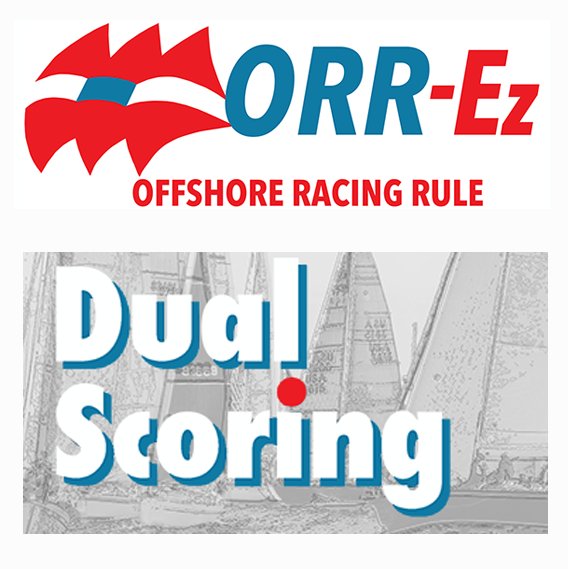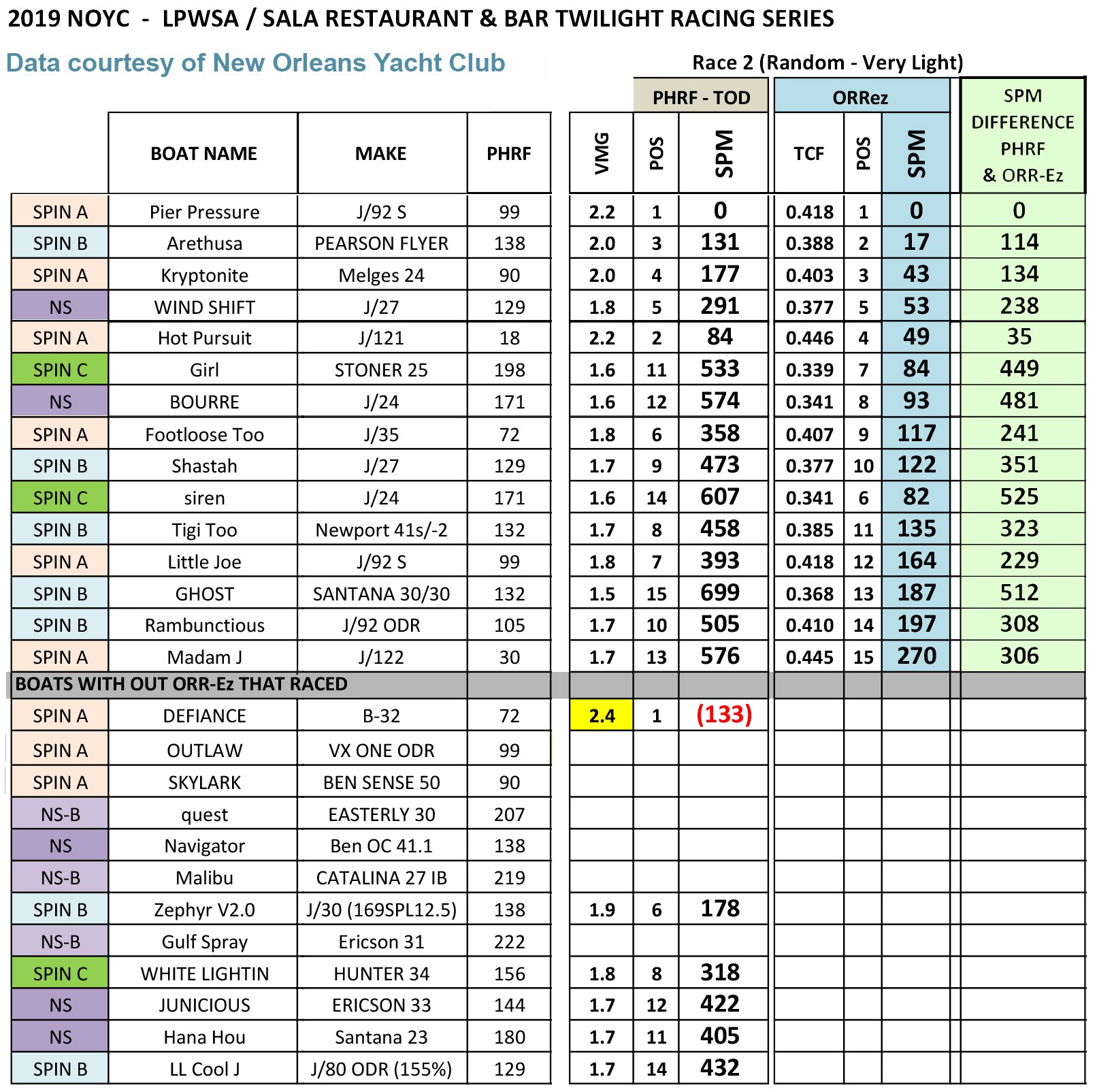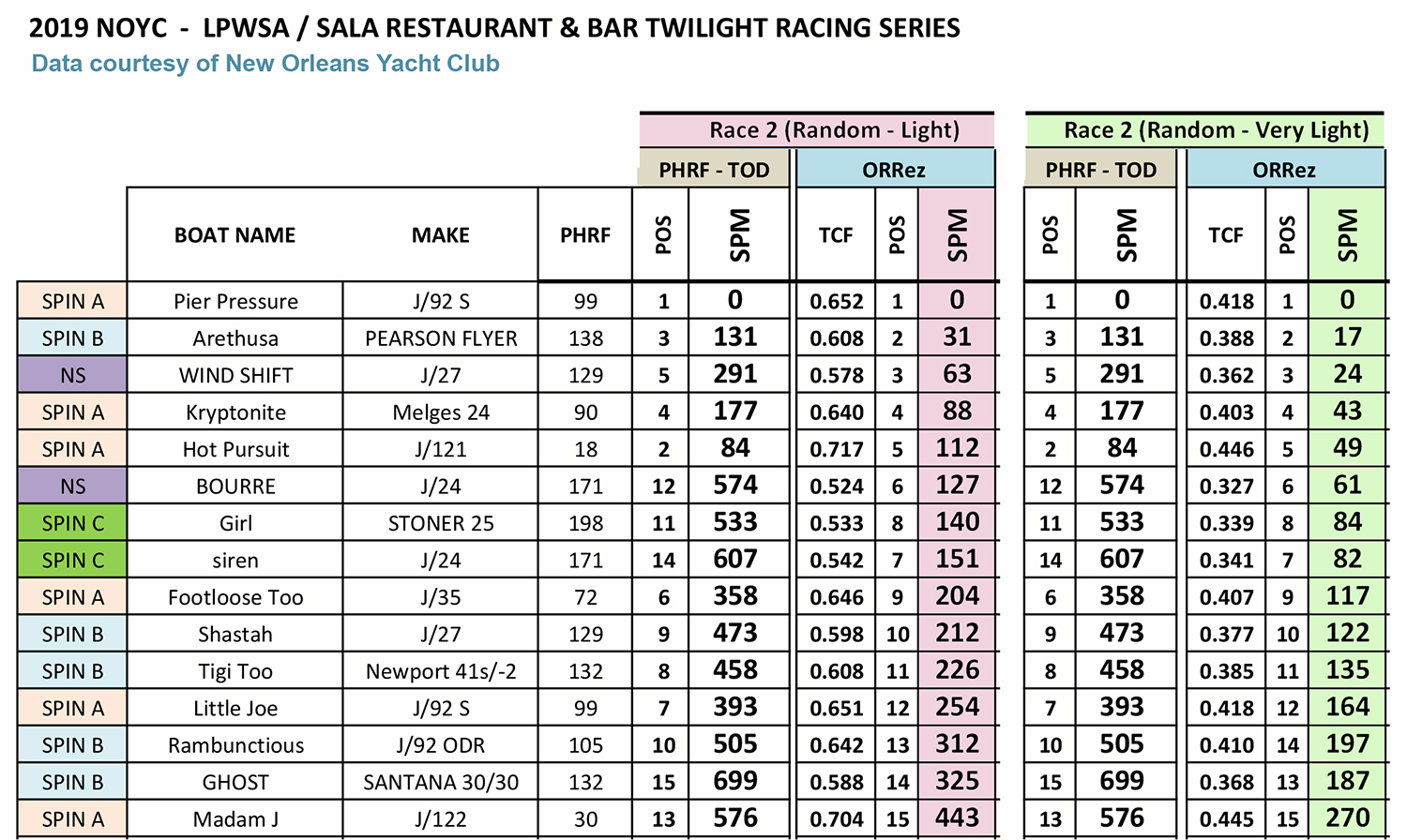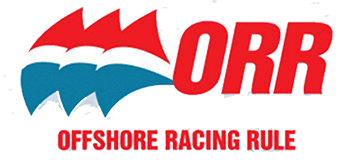This is the second in a series of studies in which selected races are "dual-scored" with the ORR-Ez rating rule. We’ll review the data and make evaluations based on results, conditions and course configurations. Comments and questions are welcome.
 The race: The race we’ll examine this week is the New Orleans Yacht Club’s second Wednesday Night race, “Series 1, Race 2” which was held on March 20 in 3-5 knot winds, gusting to 6, on a random leg course that involved mostly reaching.
The race: The race we’ll examine this week is the New Orleans Yacht Club’s second Wednesday Night race, “Series 1, Race 2” which was held on March 20 in 3-5 knot winds, gusting to 6, on a random leg course that involved mostly reaching.
The dual score: Here we present the actual scoring under PHRF ToD (Time on Distance) and then scoring with ORR-Ez ratings using a “Very Light/Random Leg” rating set.
Interesting times! The race this past Wednesday evening was on the other end of the wind-range spectrum, a light air affair that must have felt like a huge departure from the week prior, a heavy air first race of the season.
Anyone who has ever spent as little as a few short weeks racing in a light-air venue knows all too well how difficult it is to score a light-air race, as invariably part of winning and losing is a complete roll of the dice. One side of the course may have 50% to 100% more breeze (four knots, as opposed to two) and if you chose the wrong side, you can suffer there for agonizing minutes…or hours.

What’s interesting here is that despite light-air vagaries, every boat scored with ORR-Ez improved their performance with regard to seconds behind the leader per mile.
And while the differences were still wide, typical of soft breeze events, the scoring did get closer throughout the fleet. Once again, we are using the “SPM DIFFERENCE” metric on the far right side of the data table.
As in the week prior, there was not a lot of fleet inversion. So far, with just a two-race sample at NOYC, the scoring difference has consisted mainly of minor tweaks, rather than wholesale fleet inversion, which is probably a good thing, as it’s an illustration of the fact that ORR-Ez is not a huge departure from PHRF, it’s more of a fine tune.
Here’s one more take on this race. This data, below, shows the benefit of ORR-Ez’s new “Very LIght” set of ratings, as opposed to if the race were scored with the “Light” ratings.

“Light” ratings assume a windspeeds of 6 - 10 kn. However, many of us race in venues with much less breeze, especially when the sun begins to set. The “Very Light” ratings assume windspeeds of less than 6 kn.
In this race, using the “Very Light” ratings decreased every boat’s “SPM Difference” by as much as 40 – 60 percent, compared with the “Light” ratings.
Takeaways:
- As demonstrated in the first article of this series, racing becomes closer when scoring with ORR-Ez.
- In this fleet so far, after just two races, no one dominates.
- Any boat over 10,000 lbs is still in the back of the pack. This may be due to small, nimble boats having an advantage on short courses, likely getting better starts and clearer lanes.
- The new “Very Light” ratings make those “drifter” races much more competitive.
We understand that good analysis requires looking at more than one race and will continue this series, so stay tuned! Questions or comments? [email protected]


